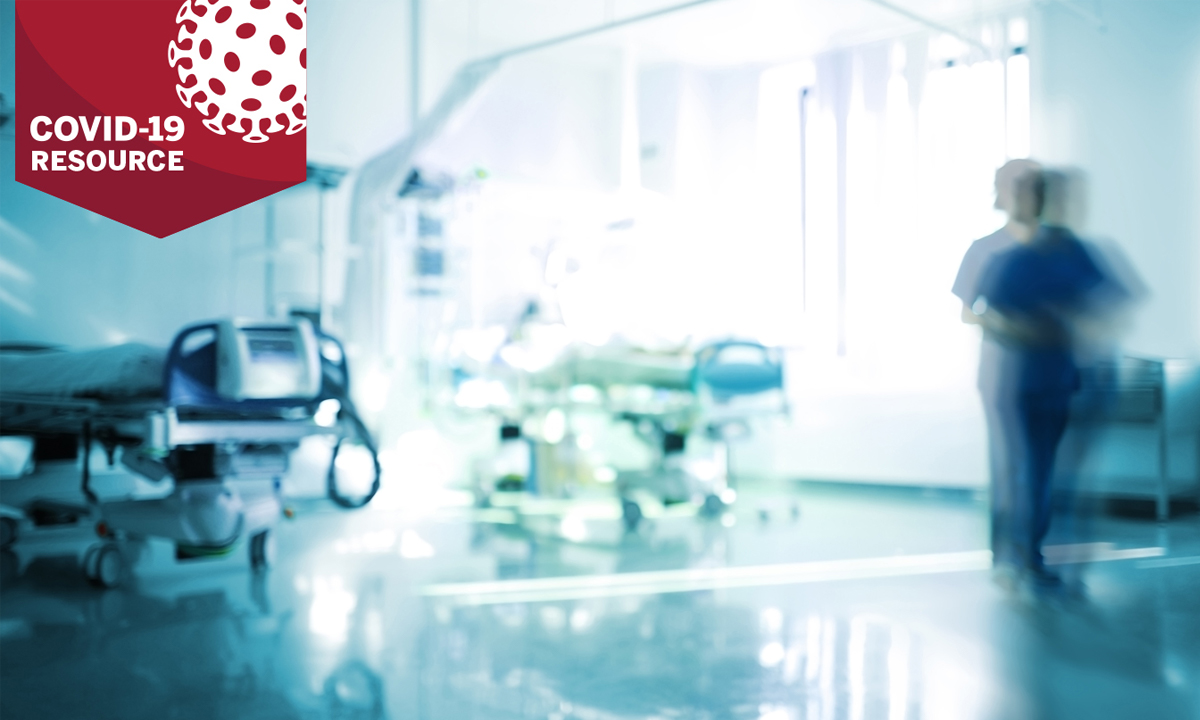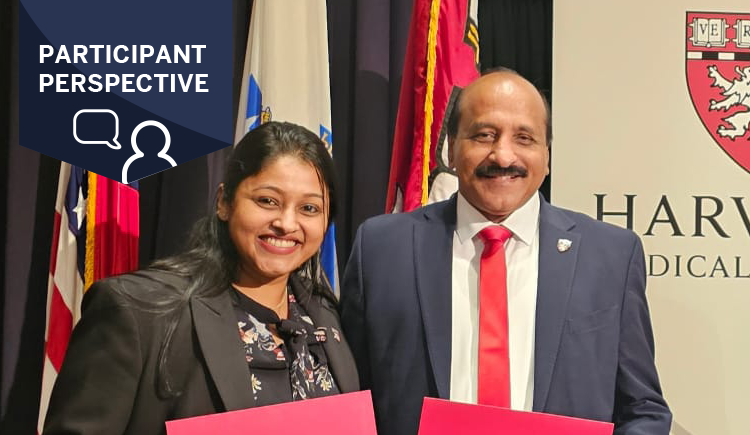
Information regarding COVID-19 has rapidly evolved. The content in this article provides a historical snapshot of events surrounding the date of posting.
During a discussion on the challenges of ensuring staff and patient safety during COVID-19, Ajay K. Singh, MBBS, FRCP(UK), MBA, Wilton Levine, MD, Chuck Morris, MD, MPH, and Richard S. Gitomer, MD shared insights on how they were planning for ICU capacity surges and delivery care for the future. The following article is an excerpt from this discussion recorded on March 25, 2020 that has been condensed and edited for clarity and accuracy.
There’s been a tremendous shortage of ICU beds and ventilators in New York City. What is the Mass General command center thinking on how a potential surge might impact ICU beds and ventilators in Boston?
Dr. Levine: Our command structure actually began meeting in early January when this first began, before there were any cases outside of China and only 50 to 100 cases were being reported. We didn’t know where it was going to go, but we started thinking about it then.
We have teams looking at the public health data, local data, national data, and international data to help guide us on what the range is and what our needs will be. We are making physical space preparations for ICU capacity surge and making staffing plans for ICU capacity surge.
While our procedural schedule is substantially lower this week than in our typical weeks, we are taking dozens of our PACU nurses and doing focused education. Many of them used to work in the ICU. We are retraining them so that when we have to open surge ICUs in the coming weeks, we will have staffing plans for that.
We have ventilator plans. And then, as an anesthesiologist, I make backup plans for my backup plans. How do we use our anesthesia gas machines as ICU ventilators? The fundamental mechanism of how they’re designed is a little bit different, but the principle of the ventilatory support that they can provide is largely the same.
We are working with big manufacturers like GE and Traeger to understand how to quickly retrofit, from a filtering standpoint, to make sure that those machines stay safe and don’t transmit to other patients. We have different lines of planning going, which doesn’t mean we’re not going to have a problem. But, we want to at least have ideas on solutions before the problem happens so we can nimbly enact some of those plans.
It takes a lot of communication and coordination and everyone checking their ego at the door to ask, what do our patients need? What does our staff need? What do we think our level of threat is going to be? And then, how do we imagine even a little bit more so we’re even better prepared than we think that we might need to be?
Dr. Gitomer, you talked in the past about the alternative care model that you created. A lot of that depends on predicting how long this pandemic will last and how intensive it will be. What’s the internal thinking on how many months we can expect to be in this mode?
Dr. Gitomer: I’m not sure that I’m expert enough to predict, but we’re planning for at least a couple of months. We’re trying to push off anything that’s routine at least two to three months down the road, and then, trying to deal with the stuff that’s not within the structure that we’ve created, either doing it virtually or virtually plus some face-to-face encounters. But, we’ve all asked that same question, and everyone gets the ambiguous answer back.
At some point, there will need to be in-person visits, particularly in acute settings. Do you have concerns about the model being robust enough so that you can manage a surge over a longer period of time?
Dr. Gitomer: We have the flexibility to open more of a non-respiratory site. So, if worse comes to worst, we end up coming back to where every site is a face-to-face site. As we’ve started to look through our schedules to see who could be virtual, we’re seeing that there’s a lot of face-to-face stuff that may or may not require actually laying hands on a patient.
There’s only so much time you can defer surgery, however routine it might be. You have to concretely think about planning for the operating room for perioperative areas, particularly in the mix between routine and COVID surge-related volume. What’s your thinking there?
Dr. Levine: We’ve certainly been discussing this. And the surgeons say to me, when I think about deferring this particular cancer case, can I do it next week? Can I do it next month? How long are you asking me to defer it? And what we’ve said right now is think about deferring it at least two months. We are still trying to do what is absolutely necessary. The challenge is we just don’t know how long that’s going to go. I think that this process that we're going through is going to fundamentally change how we care for patients going forward. We will have some positive lessons learned.
On the ambulatory side, we’ve certainly heard some patients say, “My Zoom visit with my doctor was actually better than driving downtown, sitting in traffic, paying for parking, waiting in the waiting room and me being late.” Many patients have been happy to wait at home and have the computer ring when the doctor’s ready. But, that doesn’t work on the surgical side, where there actually has to be a surgical interaction.
But based on what we’re seeing, I think that our procedural schedule is going to have to get more restrictive before it loosens up again. And I worry that, as things do get deferred, when they do come back to need procedures, that the procedure may not be as simple as it might have been had we done it six weeks earlier. We are asking our surgeons to keep a close eye on tumors that may be growing rapidly that do need to come in. For that reason, we are still continuing to do necessary cancer surgery in patients whom we believe need that care now.
We’ve all seen a large amount of media attention around treatments that purportedly have claims that they might be effective. We had Paul Sax, who’s a senior infectious disease physician from the Brigham, endorse Dr. Fauci’s uncertainty about whether evidence supported the efficacy and safety of these treatments. At a primary care level, how are you and your colleagues handling patients who come in and demand to be prescribed hydroxychloroquine or something else?
Dr. Gitomer: Well, we’re all influenced by Dr. Sax, so there’s that. We got our pharmacists together and really tried to come up with scripting to give people something to fall back on. For the most part, very few of my colleagues are offering any kind of treatment, and number one because of the uncertainty of the evidence. Mostly, too, is that we’re dealing with people in the ambulatory setting. And, I think for something like that, where there’s so much uncertainty—it’s an easier discussion than if they’re sick in the hospital and wanting something else to do.
So, it’s like everything else for primary care. There’s stuff on the internet that patients bring in that we have to address to some degree. It’s not different from our day-to-day work. But, we are trying to equip them just because there is so much in the media.
Are there any overarching lessons you’ve learned from this unprecedented experience that you want to share with colleagues from around the world?
Dr. Gitomer: Once we get through this, it will be interesting to see how care is changed, both from the patient’s expectations perspective and what we think might be actually a reasonable way to go.
I’m a bit worried about the chronic care follow-up and things falling through the cracks in that regard. So we’re trying to put systems in place that if we do defer somebody, we actually reach back out to them once we deal with the backlog for all the stuff that we’re deferring. But, I do think for primary care, the care model will change once we get through this.
Dr. Levine: I’ve been amazed by the outpouring of ideas and support from communities locally, regionally, and nationally on how we can make care better. I don’t yet know what those lessons learned will be or what our care model enhancements will be. I suspect when we get through this on the other side, we will have learned things that will help make our health care delivery system better.
I worry about the path that we’re going to take to get there. I worry about large parts of the country that still see social distancing as a burden and not something they need to do. 'That can happen in New York or Boston or California, but I don’t need to do it in my community.' This is real. If we don’t slow down our pace of interactions with each other, this disease will overtake our health care system and our society. It is a problem like we have never seen before.
I think that in Massachusetts, we have seen a lesson learned that we can slow the rate of rise. Our rate of rise in Massachusetts has been about 20 percent per day, while New York has been about 35 percent per day. That is a major, major difference. Early social distancing and working from home matters. It will save lives.
And so for people around the country, I would encourage you to strongly consider staying away from people. It is not just happening to old people. We are seeing young people who are critically ill with this disease. If it is not already rampant in your neighborhood, it will be. And if there’s only one case, then there are actually 10, and we just don’t know it yet. So, please take it seriously.


